Iloilo is a city of magnificent history and opportunities shaped
throughout its existence. Still, it remains to be vibrant and
culturally-passionate through its culture-loving people who never fail
to dream big yet continue to preserve its rich cultural past. If you’re a
true-blue Ilonggo or just a visitor of this exquisite city, here are 10
things you should know: 

Are you Foodie? Come to Iloilo and tickle your taste buds.
Iloilo City is more than just the heart of Western Visayas and
economic center. For visitors and travelers who are looking ahead to
visit this vibrant city, it’s world-famous gastronomy, delicacies and
food tickle the taste buds and palettes of many people. We have the
luscious bowl of La Paz Batchoy originated in the wet market of La Paz
district, the delicious soup-based Pancit Molo, the Biscocho Haus
selling yummy Biscocho and Pandesal ni Pa-a in Jaro district, the
Barquillos from Wewins, tastiest Queen Siopao of Roberto’s, the variety
of the best seafood, chessy baked Oyster, Native Chicken barbeque in
Tatoy’s Manokan, all of these mouth-watering menu sold in various
mini-restos along the shores of Villa Beach and many other must-have
keepsakes the brings the flavors of authentic Ilonggo cuisine.
Didn’t you know your grandparents were movie lovers? Yes they are.
Back in the middle 1950s until 1980s, Iloilo City’s progress paved
way for the expansion of its bustling metropolitan where countless movie
theaters started to mushroomed and scattered within the city. The
existence of some prominent movie theaters such as Cinema, Regent, Crown
Allegro and Rivera, among others makes Iloilo as the movie capital
outside Manila. In fact, prominent film festivals in Metro Manila along
with their biggest movie stars were brought in to Iloilo back in the
heydays. The passion of Ilonggos for movie theaters simply shows that
most Ilonggos are affluent and enjoy living in a economically-stable
city because they regularly watch movies after work or during weekends
with their family. Old folks even used to say that most movie theaters
are full-packed during premieres of important Filipino movies. Back
then, Ilonggos are very passionate with local Filipino movies which are a
form of cultural pride.
Ilonggos take Banking seriously. Here’s why…
There’s a bank in almost every corner in downtown area of Iloilo
City. The progressive business, commerce and trade back in the 18th
century and the economic rise of the city in 1900s, Ilonggos are known
for their thrifty and wise-spending attitude. Thus, banks were lining up
in downtown area where most businessmen and old rich Ilonggos are
ensuring they always kept their hard-earned money at the right place.
Since Iloilo has been the most important international city next to
Manila during the heydays, foreign exchange banks can be seen everywhere
and large amount of deposits goes in the bank every day. In fact, most
of the city’s present major investors were convinced to invest because
Ilonggos are known to have big deposits in banks and financial
institutions, something that transcends potential financial prominence
and the right attitude for progress. 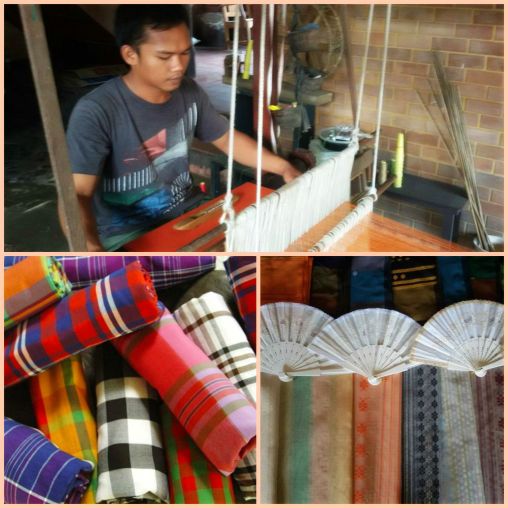 Ilonggos are one of the BEST weavers in the world.
Ilonggos are one of the BEST weavers in the world.
 Ilonggos are one of the BEST weavers in the world.
Ilonggos are one of the BEST weavers in the world.
One of the reasons for Iloilo City’s economic prominence was the
establishment of its popular weaving industry – sinamay, hablon, jusi
and piňa cloth in later 18th and early 19th
century. Iloilo became an international trading port for textile
industry where local products are sold and send to Europe and other
parts of the world. Textile products made from Iloilo were considered
expensive and in-demand in the international market during the heydays.
Such reputation ensured Ilonggos’ timeless ingenuity and legacy with
their distinct local products. Textile industry and retail stores
mushroomed relentlessly in Calle Real, the busiest business district of
the city. In Villa de Arevalo, Sinamay production flourished as local
weavers became more and more popular for their intricate hand-woven
products that impressed investors and suppliers. The Iloilo Sinamay
House, an antique heritage house in Villa owned by Guizon and Villanueva
clan passed on to her children their family’s business. 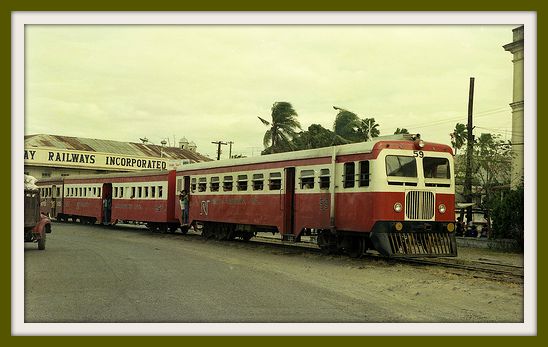 Before jeepneys, care for a train ride in Iloilo?
Before jeepneys, care for a train ride in Iloilo?
 Before jeepneys, care for a train ride in Iloilo?
Before jeepneys, care for a train ride in Iloilo?
The company was originally founded in Hartford, Connecticut, United
States as Philippine Railway Company Inc. on March 5, 1906. It was part
of a collection of Philippine infrastructure companies. On May 28, 1906,
the Philippine Commission granted the Philippine Railway Corporation a
concession to construct railways on the islands of Panay, Negros and
Cebu. In 1907, construction began on a railroad from Iloilo City to
Roxas City in Capiz. It was later controlled and owned by the Philippine
government as Panay Railways Inc. with headquarter in La Paz in Iloilo
City. The original route the company’s train service was 117 kilometers
(73 miles) long, included 19 permanent, 10 flag stations and connected
to La Paz in Iloilo City heading as far as Loctugan in Capiz. It had a
total of 46 bridges. The operation of the train service ceased in 1983
and its demolition started in March 2005 under the administration of
President Fidel V. Ramos. 

Photo from habagatcentral.com
Forget about shopping malls, Iloilo’s Calle Real is timeless!
Its existence dates back in the time of Spain’s colonial era in the
Philippines, Calle Real is a long-stretching old business district in
Iloilo City where most of the pioneer Chinese merchants and local
business clans established their businesses. From expensive to the
cheapest shopping centers, retails stores, boutiques, goods, textile
products, medical supplies, restaurants, and street vendors selling
almost everything are lined-up beautifully to cater the locals. Calle
Real is known for its heritage buildings build during the Spanish and
American era in the Philippines. The recent effort of the city’s local
government and Heritage Council to rebuilt and revive the original
façade of heritage buildings creates an echo of cultural pride. The
sights and sound of Calle Real dramatically changes from time to time.
Its long existence captured great memories of Ilonggo culture,
business-minded nature of locals, the city’s legacy for trade and
commerce integrated in its impressive international business
relationship in the past. Back then, elegant Illustrados, well-dressed
elites and the iconic Calezas used to roam around the streets of Calle
Real, a place that even until now never loses its mark in the lives of
Ilonggos as their first and true leisure destination. 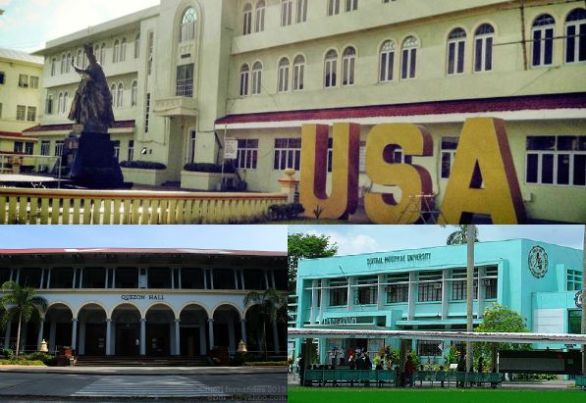 The city with over 100-year-old universities
The city with over 100-year-old universities
 The city with over 100-year-old universities
The city with over 100-year-old universities
Iloilo City is considered as the “center of education in Western
Visayas” by having the most numbers of schools both private and public
school. During the old times and presently, students flocked in Iloilo
to gain the best education especially in tertiary level by having the
biggest and prestigious universities. Iloilo’s two oldest universities
who passed its centennial year or 100 years of existence but still going
stronger are the University of San Agustin and Central Philippine
University. Founded by the Order of Saint Augustine missionaries, the
University of San Agustin was established in July 15, 1904 and
celebrated its centennial year on 2004. Established in 1905 by American
philanthropist John D. Rockefeller under the auspices of the American
Baptist Foreign Missionaries, the Central Philippine University (CPU)
has become known for its strong Christian foundation, competitive
courses and a tourism-friendly university campus for its wide
nature-friendly scenery and old buildings. CPU celebrated its Centennial
Year in 2005. West Visayas State University is 113 years old this 2015.
It is a prominent university with countless achievements to boast
originally founded by the Thomasites who came to the Philippines in the
early 1900s, it was a part of Philippine normal school system under the
American occupation until it became separate and formally established in
1924. Iloilo Science and Technology University formerly Iloilo School
of Arts and Trade (ISAT) and later became Western Visayas College of
Science and Technology (WVCST) founded in 1905 is another educational
institution in Iloilo City that existed for over a hundred years. The
university is still fulfilling its vision of providing quality education
from its laboratory high school, tertiary college courses and
vocational-technical continuing course.  What used to be Iloilo’s King of the Road?
What used to be Iloilo’s King of the Road?
 What used to be Iloilo’s King of the Road?
What used to be Iloilo’s King of the Road?
Calesa, the traditional two-wheeled elegant cart pulled by a horse
used to roam the streets of Iloilo City particularly in Calle Real
during the Spanish era. They used to be the King of the road in Iloilo
even before its transformation into a royal city through a decree by
Queen Regent Maria Christina of Spain in 1889. During the late 1960s and
early 1970s, Calesas can be still be seen in Calle Real. But the
popularity of more modern jeepneys replaced the existence of traditional
Calesa in Iloilo City.  Did you know that Ilonggos were the first to fly?
Did you know that Ilonggos were the first to fly?
 Did you know that Ilonggos were the first to fly?
Did you know that Ilonggos were the first to fly?
Iloilo holds the record as the first city to have a commercial
airline company. 8 years before the Philippine Airlines (PAL) was
established, Iloilo Negros Air Express Company (INAEC) owned by Eugenio
Lopez had its inaugural flight in Fort San Pedro on February 1, 1933.
The company catered to chartered and commercial flights during its peak
years. The INAEC site airport was destroyed by 36 Japanese bombers on
December 18, 1941 during the outbreak of World War II. Today, INAEC
still exists in Iloilo providing chartered flights including medical
emergency flights for private clients.
Didn’t you know your grandparents are shopaholics?
Since Iloilo City is prominently popular commercial metropolis next
to Manila even way back during the Spanish colonization years, the city
secured itself as a bustling commercial and leisure destination.
Hoskyn’s Department Store located along J. M. Basa Street was considered
as the oldest shopping center in the Philippines according to local
historians established in 1877. It was founded by Englishman Henry
Hoskyn’s under the business name “Hoskyn’s and Co.” It is the first
store in the country to introduced “fixed price” policy in merchandising
and the first known “store to sell almost everything from needle to
anchor.” Right now, the building remained standing and several retail
stores existed in the same location.
Iloilo City’s newest ‘claim-to-fame”- Iloilo Business Park
Reigniting the legacy of Iloilo City and opening a new gateway of
opportunities, Megaworld Corporation, the Philippines prime mover in
real estate developer set their sights in this city to establish Iloilo
Business Park. Transforming the old Iloilo Airport (IBP) property into a
bustling new commercial, business and leisure township, IBP is
envisioned as the center of almost everything in Iloilo City. IBP will
open a high-end shopping center – Festive Walk Mall, the country’s
longest leisure strip – Street of Festive Walk, modern convention
facility – Iloilo Convention Center, BPO Buildings that would serve as
office and operation site for call center companies, international
hotels – Richmonde Hotel Iloilo and Courtyard by Marriot and high-end
residential towers sporting names like One Madison Place, Lafayette Park
Square and The Palladium, the tallest and classiest among the three
with 22 floors. IBP is seen as the grand destination that would uplift
the tourism industry and modern lifestyle culture of the city.
Employment openings in the IT-BPO sector in IBP are foreseen to rise up
to 30,000 jobs in the next 10 years. Rapid infrastructure developments
provide a life-changing hint in this modern township how Iloilo and its
people, will embrace their city’s consistent rise to prominence as the
region’s epicenter of progress.
Source:https://ibpofficial.wordpress.com/2015/08/05/10-things-you-didnt-know-about-iloilo/
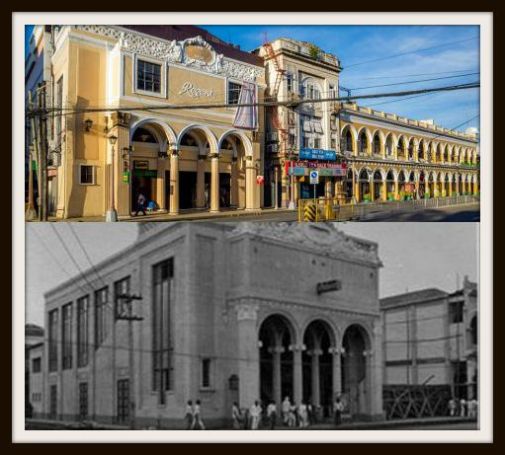
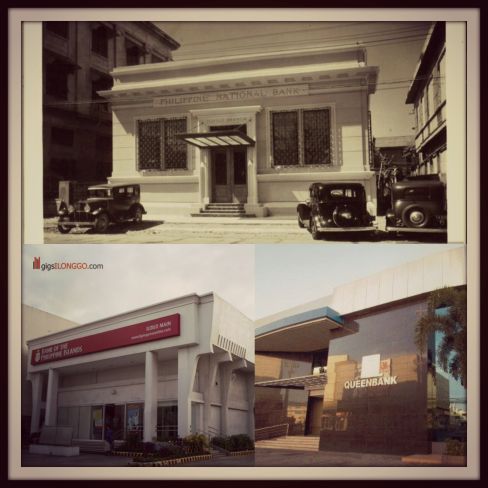

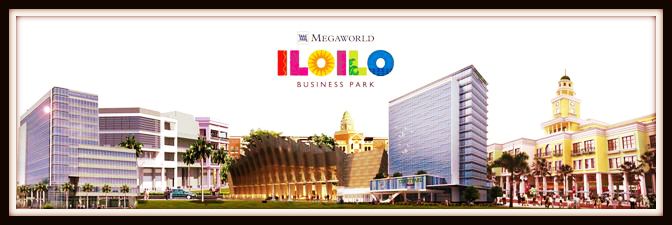
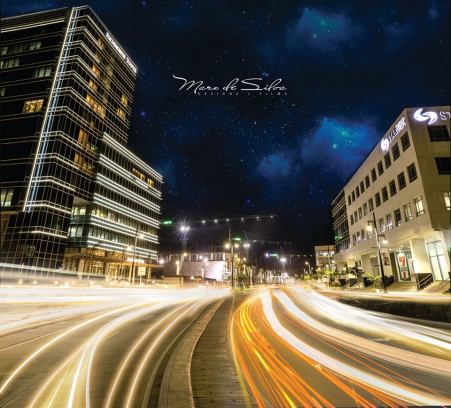














0 comments:
Post a Comment